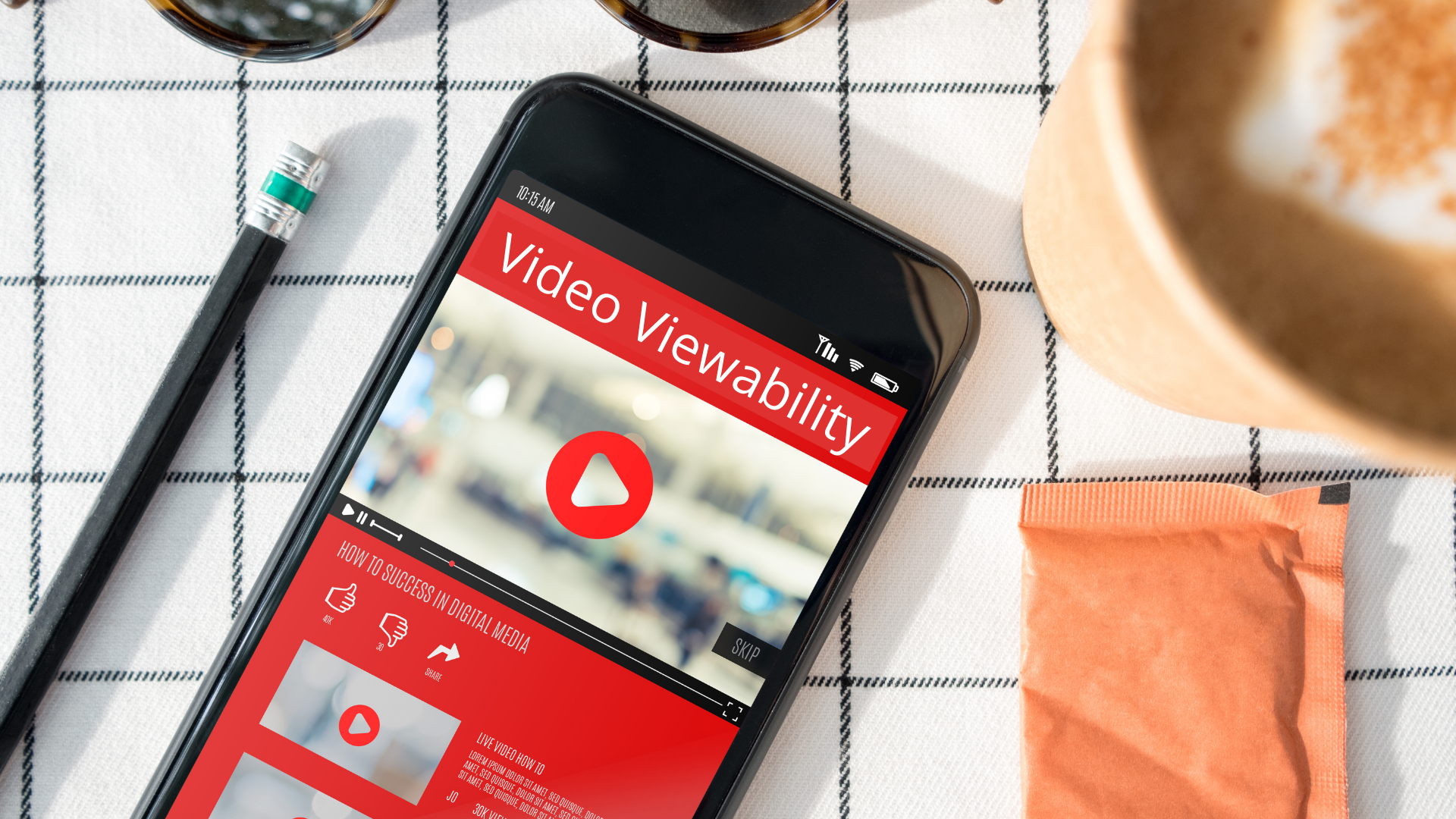By Brian Weiss, Solutions Architect at Freestar
The era of video growth is upon us and it’s causing publishers to rethink their content and monetization strategies. Given the changes to smartphones, tablets and streaming services, many people are no longer limited to watching video on TV.
According to Deloitte, the proportion of U.S consumers who pay for streaming video services is up from 73% before the Covid-19 pandemic began; as a result, 80% are now paying for streaming video service and 78% watch videos online each week. Additionally, 55% report watching them daily.
It’s no wonder advertisers are shifting dollars into video ads, which have higher engagement rates than display ads. But video viewability is a hot topic in digital video advertising. Unclear benchmarks have left marketers wondering whether video ads are being counted as “watched.”
This article offers an overview of the video viewability benchmarks used in the market today, including all video viewability acronyms and their definitions. Marketers should be aware that video viewability is constantly changing. The benchmarks should be used as a benchmark, not a definitive video viewability standard or metric.
Let these numbers sink in to understand just how rapid the growth is:
- 75% of mobile traffic will be video by 2022 – Cisco
- YouTube users watch more than 3.25 billion hours of video each month, with an average viewing session of 40 minutes (up 50% YOY)
- 93% of video views on Twitter happen on mobile
Why is video growth / adoption accelerating so quickly?
Video is highly engaging and viewers reportedly retain 95% of a message when watched through a video across all the devices it’s now available on.
Here’s some of the key reasons for this explosive growth:
- The widespread availability of smartphones has led to a surge in smartphone ownership, and devices are available at diverse price points.
- The improved bandwidth availability of cellular networks, the emergence of 3G, 4G and now 5g mobile connections have led to increased video consumption.
- Cheaper data plans: Many digital publishers have closed in on the long-awaited demise of one of the industry’s biggest pain points over the last several years: cheaper and more accessible bandwidth.
- The proliferation of video platforms, such as YouTube, Vimeo, and Twitch have attracted a massive monthly audience.
- Growth of video player adoption and original video creation by creators/publishers.
Marketers can also use the video viewability video to share with their video teams and agency partners.
Video Viewability Acronyms
Impression
A measure of the number of times an ad is displayed. In the context of video, simply serving the ad is not considered sufficient for an impression. The ad server may fail to serve the video, the player may fail to render the video, or the user may navigate away from the page. As a result, video ad impressions are only counted once the first frame of the video renders.
View Event
Video ads generally use a delayed impression model, where a “view event” must be received before logging an impression. A “view event” occurs when the first frame renders successfully.
Abandonment rate
The percentage of users who view a video ad but do not complete it, by navigating away from the site, closing the browser, and so forth. A high abandonment rate is reflective of poor audience reception, due either to low-quality creatives or incorrect audience targeting.
Error rate
The number of errors over the number of impressions won. Common errors include:
- Timeout
- File not found
- Malformed VAST
- Corrupted media file
VTR – Viewable Impressions as Defined by the IAB
VTR refers to video viewability as defined by the Interactive Advertising Bureau (IAB). It is calculated based on the video creative and video player size. It’s measured in a 100-pixel square within the video player, using Adobe Omniture video code or comScore video analytics. Also referred to as VAST video viewability.
CTV – Connected TV
A TV set that is connected to the Internet either natively (such as a Smart TV) or via an external device (for example, a streaming stick or digital media player).
Connected TV includes all devices that fit into the following descriptions:
- Connected or streaming devices: Devices that connect to a TV screen to display video streams (Roku, Apple TV, and so forth)
- Smart TV: TVs with integrated Internet connections (Samsung Smart TV, and so forth)
- Gaming consoles: Internet-connected gaming consoles (Xbox, PlayStation, Wii, and so forth)
- Set top boxes: Devices delivering traditional cable and video on demand content.
Connected TV devices can show different types of content, including:
- Over-the-top: TV-like video content delivered by a video provider over the internet.
- Linear / live TV: Traditional television watched as scheduled and delivered through traditional broadcast networks.
- Video on demand: Television programs that stream on demand at the request of the viewer. This is also referred to as “non-linear” or “time-shifted” viewing.
%VTR – Percent of video viewed as defined by the IAB
%VTR refers to video viewability as defined by the Interactive Advertising Bureau (IAB). It factors in video player size and video creative length. It’s measured in percent, e.g., 60% VTR means that 60 percent of video creative was viewable. Also referred to as VAST video viewability.
CVR – Completion Rate as Measured by comScore video analytics
Completion rate, also known as completion ratio or video completion rate, is the number of video views divided by video starts. Completion rates can be measured in real-time using video ad servers like video ad serving platform video ad exchanges like video DSPs or video SSP.
TTR – Time in View as Defined by the IAB
Time in view is similar to video completion rate, but it’s defined differently by the Interactive Advertising Bureau (IAB). It measures video duration and video impressions. It’s measured in seconds, e.g., 40% TTR means that video ads were viewable for 40 percent of video duration (or video ad creative length).
VAP – Video Ad Profile as Defined by the IAB
Video ad profile, or VAP, is a video viewability metric defined by the Interactive Advertising Bureau (IAB). It’s measured in video impressions, video starts and video completed. It’s a video completion rate that factors in video player size and video ad creative length. VAP is also considered the predecessor metric to %VTR (see above) by some at the IAB.
CPM – Media Cost as Defined By Moat
Media cost, or cost per thousand video views, is defined by Moat as the total cost of video advertising divided by the number of video ad impressions served to an audience.
Average CPM – Average Media Cost as Defined by Google
Average media cost, or average cost per thousand video views, is calculated based on media spend and video view data from Google video analytics.
Avg CPV – Average Cost Per View as Defined by Google
Video view cost, or average cost per view (CPV), can be calculated based on video ads served and video starts from video ad serving platform video DSPs video SSPs. It’s typically used in a last-click video attribution model.
Avg eCPM – Average Effective Cost Per Mille video views as defined by Google
Average effective cost per thousand video views, or eCPM, is calculated based on media spend and video plays from video ad serving platform video DSPs video SSPs. It’s used in video viewability models like VTR, %VTR and CPM.
eCPM is also known as effective cost per mille video ads video ad views video ad impressions video ad views video ad exposure or something similar.
CPV – Cost Per View
Video view cost, or CPV video view video view video view, is defined as video ad spend divided by video ads served. It’s typically used in a last-click video attribution model that considers video viewability metrics like VTR and %VTR (see above).
CPP – Cost Per Play
Video play cost, or CPP video play video video video, is defined as video ad spend divided by video starts. It’s typically used in a last-click video attribution model that considers video viewability metrics like TTR and %VTR (see above).
CPR – Cost Per Report
Video reporting cost, or CPR, is video ad spend divided by video reporting events. It’s typically used based on video viewability data, like video starts from video ad serving platform video exchanges video ad servers video DSPs video SSPs and/or video completed from video ad serving platform video exchanges video ad servers video DSPs video SSPs.
VCR – Video Completion Rate
Video completion rate, or CRV video video video video, is calculated as total number of video ads completed divided by the number of video plays. It’s one type of viewability metric defined by Moat (see above). Some use a combined CPR and VTR to define CRV.
%CVR – CVR is an abbreviation of Conversion Rate.
The conversion rate is the measure of what proportion of people are persuaded by advertising to take a particular action – such as clicking on a link or making a purchase.
Working out the Conversion Rate of an ad campaign is pretty simple. You just need to divide the number of people who converted by the number of people who clicked on the ad, then multiply that number by 100 to give you the percentage.
VCR – Video Completion Rate
Video ads are not effective if they’re not viewed to completion. Viewability is such an important factor in digital advertising that advertisers have created specific benchmarks, including a Video Completion Rate benchmark of 70%. This metric can be measured directly within the ad server or using outside 3rd party verification providers.
VTR – View Through Rate (VTR)
View Through Rate (VTR) is the number of completed views of a skippable ad over the number of initial impressions.
VTR = Complete views (user did not skip) / Impressions (ad rendered)
CTR – Click through rate
Video Click Through Rate (CTR) is calculated as the number of video ad clicks divided by the total number of video ad impressions served. Some use a combined CPR and VTR to define %CVR.
Duration
The length of time allotted for a video ad to play. The Ad Exchange allows buyers to traffic video ads in 15, 20, 30, 60 and 120 second durations.
Video throttling
Video throttling is an artificial constraint of the number of impressions per hour. Google partner inventory has a throttling threshold to protect publishers from ads with a high error rate. New video ads are initially throttled because no error rate yet exists.
- Video Throttling occurs when: Error Rate > Fixed Threshold
- Error Rate = number of errors / number of auctions won
Quartile
Measures the effectiveness of video ads by determining what percentage of a given video was viewed by users on average. Each viewing is reported in increments of 25% and averaged across users. For example, if five users viewed a video up to 50%, 50%, 50%, 75% and 75%, the average would appear as 60%.
Skippable VIdeo
A video ad that allows the user to skip the ad after five seconds. Skippable ads are sold by CPM and billed when the first frame renders, even if the user skips the video.
Skip Rate
Measures the rate at which users choose to skip the video ad by clicking the “skip” button accompanying a skippable video.
Pretargeting
Pretargeting is one of the key methods used to determine which RTB requests to send to a buyer. Pretargeting ensures that you get only desired bid requests. You can set up pretargeting groups that act as filters for bid requests.
IMA SDK
The Google Interactive Media Ads (IMA) Software Developer Kit (SDK) lets publishers to display linear, non-linear, and companion ads in interactive media content such as video and online games. The IMA SDK exposes a set of APIs that allow publishers to request ads from Google Ad Manager or AdSense, interpret the ad response, and report metrics back to the ad server. The VPAID adapter can also be used to load the IMA SDK dynamically. There are several IMA SDKs in use with video publishers, including IMA2, IMA3, and IMA for HTML5.
Real Time Bidding (RTB)
Real-time bidding (RTB) is the process in which digital advertising inventory is bought and sold. This process occurs in less than a second.
On Authorized Buyers, you can use RTB to evaluate and bid on each available impression. This is available for any Authorized Buyer with an ad server or bid engine. No additional contract is required, but Terms of Use are referenced in your Authorized Buyers contract.
Here’s the terms to know for RTB:
- Publisher: An owner of a web page.
- Cookie: A small piece of data that might keep track of visits to a website, remember items in a digital shopping cart, or help personalize a web-page experience.
- Personalized ads: Digital ads that let advertisers reach users based on their interests and demographics.
- Advertising partners: Advertisers who work with Google and publishers to buy advertising space on a web page. In the European Economic Area (EEA), the publisher must obtain consent to process cookies, and provide information about which advertising partners data is shared with.
Rate Cards
A rate card is a list of rates used by companies as a guide when making pricing decisions and determining how much they want to pay for products or services from suppliers, employees, customers etc.
Rate cards provide a valuable snapshot of the following information: pricing, deadlines, policies, demographics and other vital information. The rate card is also crucial for advertisers to understand the value of inventory based on different ad types and placement.
Another useful feature from Rate Cards is the ability to compare publisher’s pricing and distribution methods like CPM and CPV.
Publishers use Rate Cards to list the highest prices they will accept for advertising space. Prices listed, however, are often very different from expected advertising costs. Negotiation is possible based on current ad demand, unit type (e.g., VPAID), etc.
Remnant Inventory
Remnant space is leftover campaign space that can be sold at a lower price than premium campaign spots. It offers no guarantees on ad placement to advertisers, making it best suited to awareness and branding campaigns where performance isn’t the primary objective.
Run of Network & Run of SIte
Essentially, remnant inventory is treated similarly to run-of-network (RON) and Run-of-site (ROS) methods and is most effective for raising awareness and branding campaigns which don’t guarantee reaching an advertisers target audience.





